#claude-andré deseine
Text
One of the plaster repros of the Deseine bust
Googling around, it seems one of the plaster versions of Claude-André Deseine’s 1791 bust of Max was sold in London in 2021 for just over £5K… Previously in Stanley House – would be interesting to know its provenance.
It’s a v good photo – the lighter colour of the plaster shows the detail beautifully, incl the buttonhole stitching!
#maximilien robespierre#robespierre#french revolution#claude-andré deseine#art#18C art#révolution française#art révolutionnaire
4 notes
·
View notes
Text

A quick ~3hr sketch of Maxime based on the Claude-André Deseine bust 🙏 Am currently experimenting with new styles and trying to use colour schemes out of my comfort zone.
235 notes
·
View notes
Text





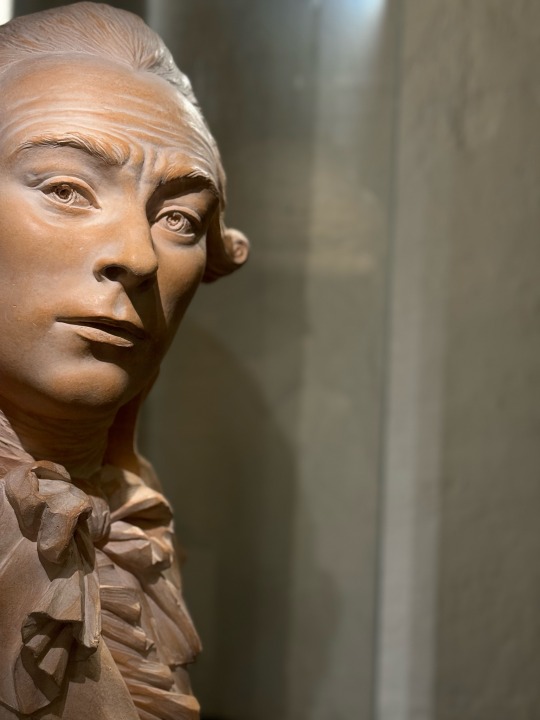
Conciergerie copy of the Claude-André Deseine cast in Vizille
99 notes
·
View notes
Text
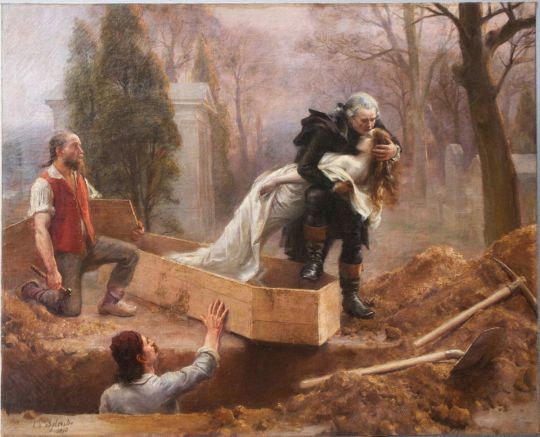
Joseph-Noël Sylvestre - Danton embrasse le cadavre de sa femme (1893)
On 10 February 1793, while Danton was on mission in Belgium, Antoinette Gabrielle Danton died in Paris giving birth to her fourth son, who did not live. On his return to Paris on 17 February 1793, Georges Danton found an artiste from the faubourg Saint-Marceau, the sculptor Claude André Deseine, who was deaf and mute, and took him (in exchange for a bundle of assignats, to the Sainte-Catherine cemetery where his wife was buried.
In the middle of the night, with the cemetery caretaker's aide, Georges Danton had his wife Antoinette Gabrielle disinterred and her coffin opened, covering her with kisses and imploring her to pardon him for his many sexual indiscretions, and had a death mask taken. The mortuary bust of Antoinette Gabrielle Danton, which caused a scandal when first exhibited in the year of her death, is now visible in the museum in Troyes in Aube. (source)
360 notes
·
View notes
Text
Halloween was yesterday so I'm late, but look at the spooky busts of the place de la Révolution in Montpellier
I mean, I don't know what went wrong with the reproductions of the David d'Angers busts, but they look very rough and cursed

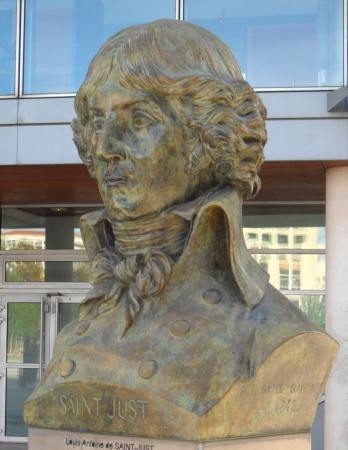
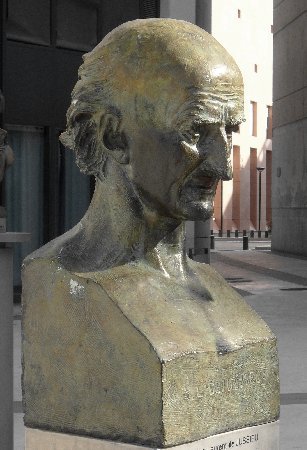

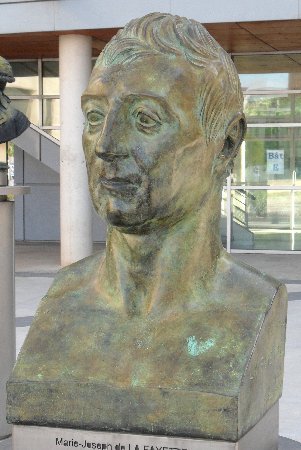

From top to bottom and left to right: Couthon, Saint-Just, Jussieu, Sieyès, Lafayette, and La Révellière-Lépeaux without his famous microbangs mullet. The pictures aren't mine, they're from here.
See the original David d'Angers busts of Saint-Just and Couthon for comparaison
It seems mostly a problem with the d'Angers reproductions cause the other busts in the same place are...well, still cursed...but not as rought looking?
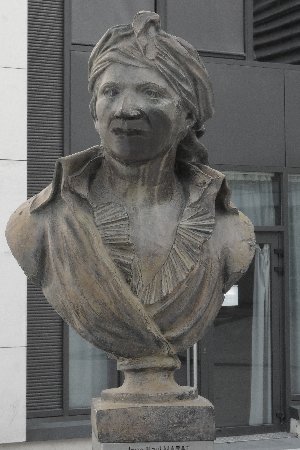

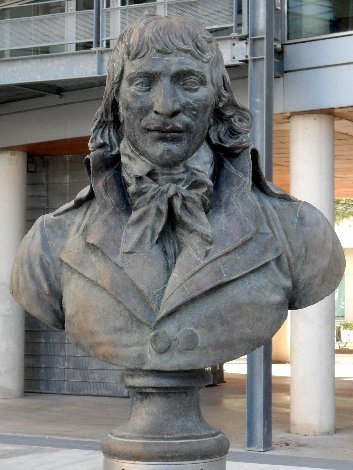

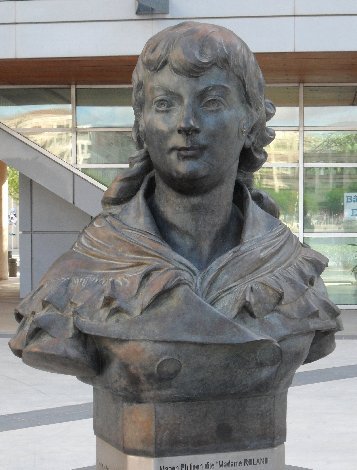

From top to bottom, left to right: Marat by ???, Danton by Paul Eugène Victor Bacquet, Desmoulins by François Martin, Barnave by Jean-Antoine Houdon, Manon Roland by Emile Carlier, and Bailly by Louis-Pierre Deseine. The pictures aren't mine, they're from here.
And then there's the Robespierre by Claude-André Deseine, who's doing alright and has some spiders friends 🕷🕷🕷 (picture from here)
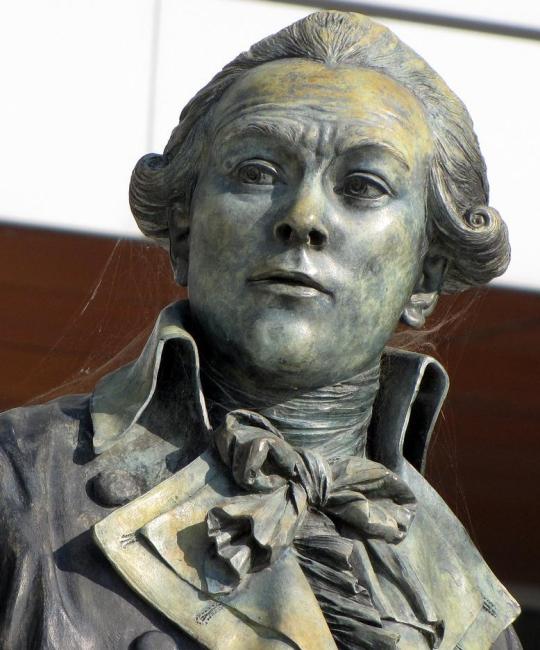
39 notes
·
View notes
Text
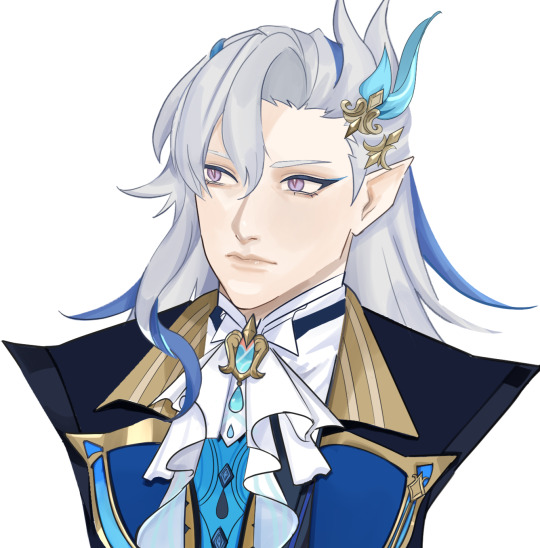
Chief Justice Neuvillette fanart referencing Claude André Deseine's terracotta bust of Maximilien Robespierre.
The fact that the release of his trailer coincidentally fell on the date that the revolutionaries abolished the monarchy in 1792 is not lost on me.
28 notes
·
View notes
Text
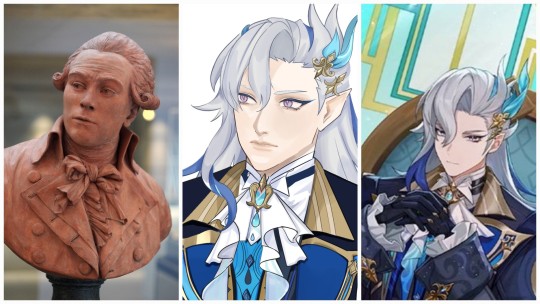
To commemorate Neuvillette's demo coming out today I decided to share the Maxime Neuvillette art I did. I'm quite pleased with the outcome lol despite hating how truly over the top the gacha designs were in the game. I know that's the point (to make the character pull worthy)but it doesn't make it any less annoying to draw. Neuvillette is pretty much what got me looking into Robespierre again. Looking through 18th C fashion on Pinterest led me to Robespierre fanarts and this animation and the rest, as they say, is history. 🙈
Maximilien Robespierre bust by Claude-André Deseine; image credit: Photograph by Rama, Wikimedia Commons, Cc-by-sa-2.0-fr"
3 notes
·
View notes
Text
Arta tridimensională (1): sculptura și modelarea

Arta tridimensională depășește suprafața plană pentru a cuprinde înălțimea, lățimea și adâncimea. Există patru metode principale utilizate în producerea de artă în trei dimensiuni. Toată arta tridimensională folosește una sau o combinație a acestor patru metode: sculptură, modelare, turnare sau asamblare. O formă de artă tridimensională care a apărut în secolul al XX-lea este instalația, o lucrare în care spectatorul este înconjurat într-un spațiu sau se mișcă printr-un spațiu care a fost modificat de artist.
Figura 2.19 | Monede romane comune
Figura 2.20 | Sculptură egipteană în relief. Autor: James Edward Quibell. Credit: GDK/Wikimedia Commons, Licență: Domeniu public
Sculptura poate fi fie de sine stătătoare — „cu acces de jur împrejur” — sau poate fi sculptură în relief care se proiectează de pe o suprafață de fundal. Există două categorii de sculpturi în relief: relief mic și relief înalt. În relief mic, cantitatea de proiecție de pe suprafața de fundal este limitată. Un bun exemplu de sculptură în relief mic ar fi monedele, cum ar fi aceste tipuri antice romane datând din c. 300 î.e.n. până la c. 400 e.n.. (Figura 2.19) De asemenea, multă artă de perete egipteană este în relief mic. (Figura 2.20) Sculptura în relief înalt este atunci când mai mult de jumătate din forma sculptată iese din suprafața de fundal. Această metodă creează, în general, un efect numit undercut (subdecupare), în care o parte din suprafața proiectată este separată de suprafața de fundal. Scene mitologice reprezentate pe Parthenon, un templu antic grecesc, (Figura 2.21) și seria Corporate Wars (Corporate Wars, Robert Longo: http://media.mutualart.com/Images/2 009_07/24/0205/582184/49777ffa -d61f-42aa-a3f1-9c47ed564b05_g.Jpeg) de Robert Longo (n. 1953, Statele Unite ale Americii) sunt ambele exemple de înalt relief folosind undercut.
Figura 2.21 | Lapith luptă cu un centaur. Credit: Jastrow/Wikimedia Commons, Licență: Domeniu public
Figura 2.22 | Bustul lui Maximilien Robespierre. Artist: Claude-André Deseine.
Modelarea este un proces aditiv în care materialele ușor de modelat, cum ar fi argila sau ipsosul, sunt construite pentru a crea o formă finală. Unele forme modelate încep cu o armătură sau un suport interior rigid, adesea făcut din sârmă. O armătură permite construirea unui material moale sau fluid, cum ar fi argila umedă, care s-ar prăbuși sub propria greutate. Această metodă de sculptură include majoritatea portretelor clasice din teracotă sau lut copt. (Figura 2.22) Lutul se pretează la modelare și, prin urmare, este un mediu popular pentru lucrări de acest tip, deși argila poate fi, de asemenea, cioplită și turnată.
Figura 2.23 | O selecție de gușuri pentru sculptură în lemn, dălți și un ciocan.
Figura 2.24 | Sculptor sculpând în piatră. Credit: Bain News Service/Wikimedia Commons, Licență: Domeniu public
Sculptura este îndepărtarea materialului pentru a forma un obiect de artă. Sculptura este un proces subtractiv care începe de obicei cu un bloc de material, cel mai frecvent piatră. Uneltele – de obicei metal sau cu vârf de metal – sunt folosite pentru a ciobi piatra până când apare forma finală. (Figura 2.23) Principala preocupare în sculptură, în afară de obținerea formei corecte, este să aveți grijă să nu îndepărtați prea mult material, deoarece nu poate fi înlocuit odată ce a fost îndepărtat. (Figura 2.24) Este posibil ca forma finală a unor sculpturi în piatră cioplită să rezulte nu numai din intenția artistului, ci și din schimbările subtile cauzate de variațiile imprevizibile în piatră, care determină artistul să „schimbe cursul” atunci când prea multă piatră a fost îndepărtată. Această posibilitate nu înseamnă că sculptorii instruiți nu cunosc limitele mediului lor: artiștii întâmpină adesea surprize, iar cei inovatori pot crea uneori soluții care le încorporează.
Figura 2.25 | Statuia de marmură a lui Eirene (personificarea păcii). Credit: Kephisodotos/Met Museum/Wikimedia Commons, Licență: CC0 1.0
Figura 2.26 | Statuia bloc Naophorus a unui guvernator din Sais, Psamtik. Credit: Muzeul Met, Licență: CC0 1.0
Diferite tipuri de piatră variază ca duritate, precum și culoare și aspect. Nu toată piatra este potrivită pentru sculptură. Marmura, o formă de calcar, a fost preferată de vechii greci și romani pentru moliciune și culoare uniformă. (Figura 2.25) Dioritul, șistul (o formă de ardezie) și greywacke (o formă de granit) au fost preferate de culturile egiptene și mesopotamiene pentru duritatea și permanența lor. (Figura 2.26) Chinezii au folosit în mod tradițional jadul, o piatră tare, fragilă, găsită în numeroase nuanțe, cel mai frecvent verde, pentru a indica înțelepciunea, puterea și bogăția. (Figura 2.27)
Figura 2.27 | Ornament de flori din jad cu design de struguri.
Figura 2.28 | Buddha așezat. Artist: Jōchō. Credit: Kosigrim/Wikimedia Commons, Licență: Domeniu public
Lemnul este adesea folosit ca material de sculptură. Datorită variațiilor în mărimea și textura granulației, diferitele specii de lemn au calități sculpturale diferite. În general, lemnul este apreciat pentru flexibilitatea și ușurința sa de formare, deși reacționează la schimbările de umiditate și îi lipsește permanența. În epoca Heian (794-1185 d.Hr.), artistul japonez Jocho a folosit lemnul îmbinat pentru a-și construi sculptura Buddha așezat. (Figura 2.28)
Sursa: Sachant, Pamela; Blood, Peggy; LeMieux, Jeffery; and Tekippe, Rita, "Introduction to Art: Design, Context, and Meaning" (2016). Fine Arts Open Textbooks. 3. https://oer.galileo.usg.edu/arts-textbooks/3, licența CC BY-SA 4.0. Traducere și adaptare Nicolae Sfetcu
Read the full article
0 notes
Photo
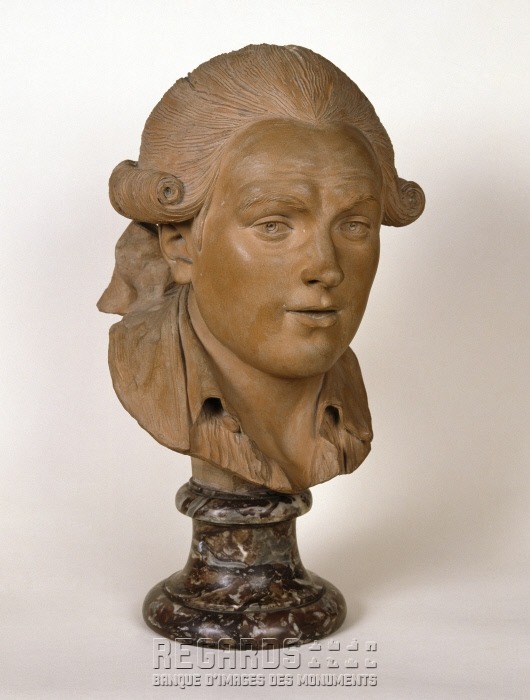
Joyeux 256e anniversaire à Augustin Robespierre, né ce jour 21 janvier en 1763 !
50 notes
·
View notes
Text
My friend Fake History Hunter on Twitter made this with the MyHeritage app… Max in 3D.
57 notes
·
View notes
Text
A few words about the famous bust...
This one:
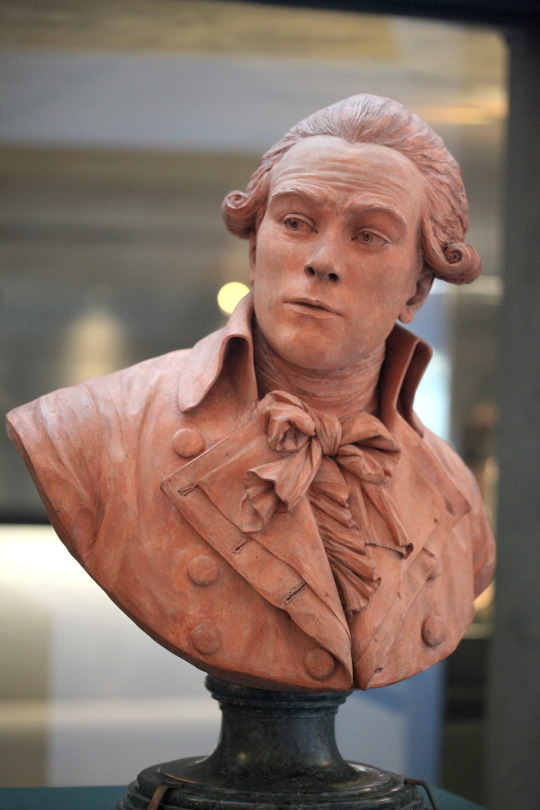
(https://upload.wikimedia.org/wikipedia/commons/b/bd/Robespierre_IMG_2303.jpg)
“A cette même époque, l’automne 1791, le sculpteur Claude-André Deseine, sourd-muet de naissance, modela un buste de Robespierre qui adopte une position médiane entre l’attitude convenue du portrait par Labille-Guiard et la pose emphatique que lui avait attribuée David. Cette effigie séduisante, animée, presque anxieuse, n’exprime pourtant ni la puissance oratoire (voir Mirabeau par le même sculpteur), ni l’héroïsme à l’antique (voir Barnave par Houdon). Ce buste vivant appartient à l’univers politique du club des Jacobins plutôt qu’à l’Assemblée Nationale. Deseine voulut l’offrir au club en décembre 1791, en même temps que le buste de Pétion, ce qui suscita la proposition de les « couronner ». Du coup, un membre rappela que le mois précédent il avait été décidé qu’aucun citoyen ne devait avoir de son vivant son buste placé dans la salle des séances. Pendant tout ce temps Robespierre demeura silencieux, mais il semble avoir été impatient de reprendre la discussion sur la guerre et de prononcer le discours qu’il avait préparé (12).
- - -
(12) – Sur la séance des Jacobins du 18 décembre 1791, voir P.-J. Buchet et P.-C. Roux, Histoire parlementaire de la Révolution française (Paris, 1834), 12 : 376-381 ; E. Hamel, Histoire de Robespierre (Paris, 1865-1867), 2 : 46 ; G. Walter, Robespierre (Paris, 1946), 241-243. Le rapprochement avec le modèle en terre cuite, signé et daté de 1791, conservé depuis 1986 au Musée de la Révolution française de Vizille – voir reproductions – est dû à Maria Antonietta De Angelis (manuscrit, 1992). Sur l’attitude de Robespierre à l’égard de la diffusion de son buste, voir aussi son intervention aux Jacobins le 17 avril 1792 ; OCR 8 : 281 (référence aimablement fournie par A. Jourdan).“
Philippe Bordes, « Le Robespierrisme de Jacques-Louis David »
(« Robespierre », edited by Annie Jourdan, 1996, p.131)
- - - - - - - -
(I had to type it, manually, so - there might be mistakes, sorry; if you find any, please let me know)
“Cette effigie séduisante” - omg:) I’m not sure - what’s the best corresponding English word, in this case? I’d rather say “alluring” than “seductive”, but still, it doesn’t seem quite an adjective to be applied to a politician’s image:)
Anyway, it looks like cit. Robespierre was not much interested in decorating the Jacobins club hall with a depiction of himself))
22 notes
·
View notes
Photo
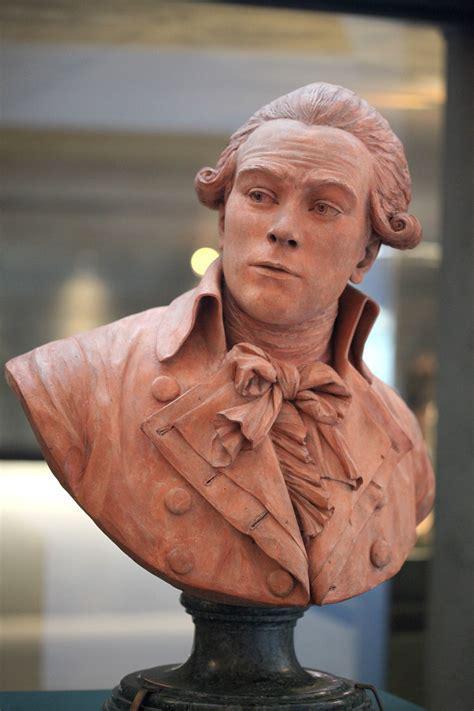
Bust of Maximilien Robespierre created in 1792 by Claude-André Deseine https://t.me/InterestingasfuckBackup/46830 #interestingasfuck #rinterestingasfuck #interestingasfuckreddit #interestingasfucksubreddit #r_interestingasfuck
0 notes
Photo


Bust of Maximilien Robespierre - Musée de la Révolution Française, Vizille Sculpted from terracotta by Claude-André Deseine in 1791, this bust was presented to the Jacobin Club on December 18th, 1791. It was intended to be displayed with other sculptures of noted “champions of liberty” in the club’s meeting room, but the Jacobins ended up declining it due to a standing law that forbade effigies of living citizens being used as decoration. Deseine built the bust without any formal sittings, instead using his frequent observations of Robespierre speaking at the Jacobin Club for reference; this is most likely the reason for the more relaxed, mid-speech posing of the sculpture. Due to its contemporaneous nature, as well as the artist’s celebrated abilities, this bust remains one of the most accurate depictions of Robespierre created.
#fun note: deseine smoothed out his smallpox scars so the bust would be extra pretty !#maximilien robespierre#statues#french revolution#mine
295 notes
·
View notes
Text
{ifag note} Did Robespierre, revolutionary, have a castration complex?

Image: Maximilien Robespierre bust sculpted from terracotta by Claude-André Deseine 1791 based on watching him speak to the Jacobin Club.
Extract #1
Does Robespierre’s “childhood [especially the collapse of his family when he was six] give us the clues to the Robespierre enigma: the young man who articulated the highest ideals of individual rights, tolerance and democracy in 1789 but who was a prominent member of a government in 1794 which abused civil liberties, incarcerated many thousands of “suspects” and oversaw thousands of executions which can only be described as political?
Extract#2
“Assertions about Robespierre’s intimate life have varied wildly....The psychoanalyst Jean Artarit is at an extreme, offering the insight that
Robespierre’s misspelling in an electoral pamphlet of a shoemaker’s name Lantillette as Languillette (“baby eel”) shows a longing to cut off the penis. For Robespierre was apparently [according to Artarit] a repressed homosexual with a castration complex, a misogynist and pathological narcissist constantly searching for a good father and an all-powerful mother”.
Extracts from Peter McPhee’s ‘Integrating Private and Public in the Life of Maximilien Robespierre‘ in his academic biography of the revolutionary including the reference to Jean Artarit, Maximilien Robespierre ou l’impossible filiation (Paris, 2003), for example, 55, 66, 68,
79, 81, 106-7, 112-14, 170, 366-67.

Execution of Robespierre, Saint Just and others 28 July 1794. Maximilien Robespierre,1758-1794. Jacobin leader during French Revolution. Louis Antoine Leon Saint-Just,1767-1794.French politician. Engraved by Jonnard after H. Renaud. From ‘Histoire de la Revolution by Louis Blanc.
Image: sonofhistory.tumblr.com via for-the-duke-of-paris.tumblr.com
#maximilien robespierre#antoine saint just#castration complex#emasculation#queer#homosexual#French revolution#Jean Artarit#Peter McPhee
11 notes
·
View notes
Photo

Currently reading (#13):
Musée de la Révolution française, Vizille: guide des collections (Emmanuelle Macaigne)
Ever since I have learned about the Musée de la Révolution française in Vizille some months ago, I have been curious to find out more about its collections. But as a trip to Southern France would be very expensive, I instead decided to acquire the guide des collections.
The book is not a typical museum guide ; rather, it follows a certain “narrative”, illustrated by numerous pieces from the collections. The separate chapters focus on a diversity of topics, such as certain events (e.g. the Storming of the Bastille), persons (e.g. Robespierre, Marat or the royal family) or specific aspects of the Revolution (e.g. the war, the National Guard or revolutionary symbolism). In all of this, the book upholds a loose chronology: starting with the Enlightenment, it traces the history of the Revolution from its beginnings in 1789 through Year II until the Directory, later focusing on how the image of the Revolution has evolved through the 19th century. (These texts are of course not always historically accurate and some of them are quite biased, but I can certainly forgive that.) The last chapters deal with the history of the Château de Vizille, as well as on its current state as the Musée de la Révolution française.
The book contains some fascinating pieces from the collection, and I intend to share some of them on my blog in the near future. In case you are interested, here is a small selection:
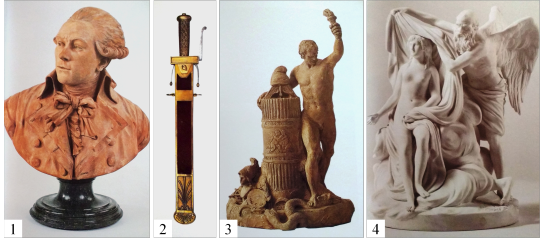
1. Maximilien Robespierre (Claude-André Deseine), 1791.
2. Sword à l’antique with its scabbard, École de Mars, circa 1794.
3. Le Peuple français (Robert-Guillaume Dardel), 1794.
4. Le Temps dévoile la Vérité et abat l’Ignorance (Josse-François-Joseph Leriche, after Boizot), 1788.
What do you think, citizens? Have you been to the Musée de la Révolution française before and, if so, what do you think about the collections?
14 notes
·
View notes
Photo
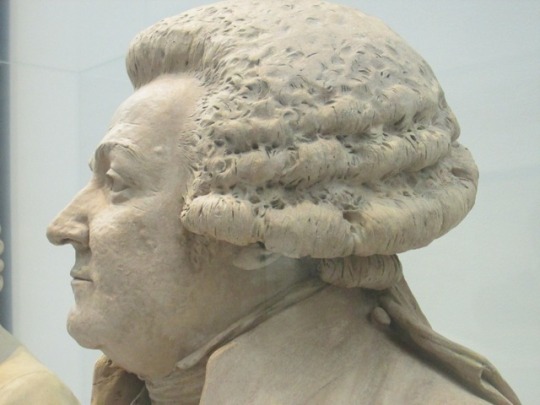
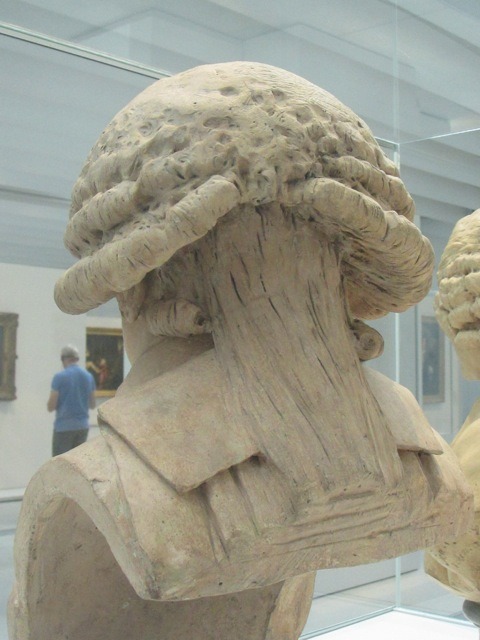
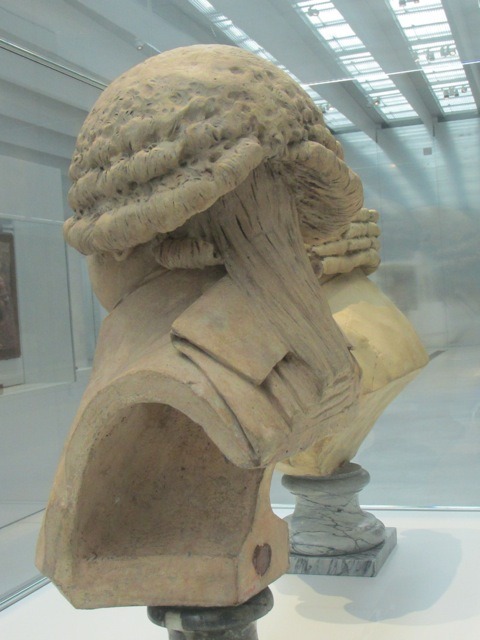


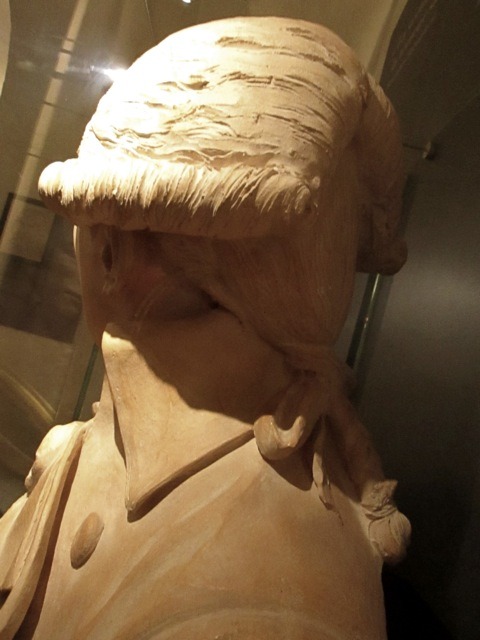
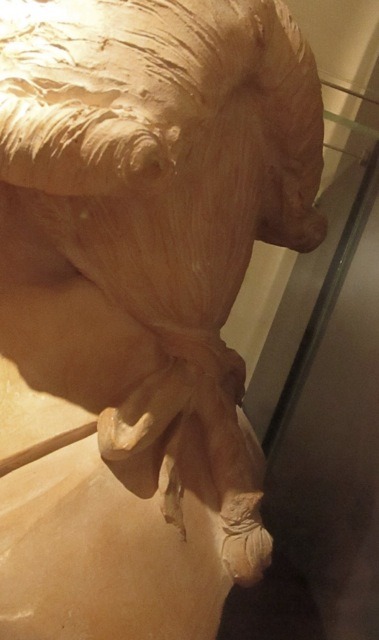
18C Men’s Hair
Just back from trip to Arras with excursions to Paris and Louvre-Lens.
So here are Mirabeau (by Houdon, Louvre-Lens) and Max (by Deseine, Conciergerie) demonstrating hairstyle and wig construction. Mirabeau’s bust truncates the bottom of his hairstyle somewhat, but the back views are interesting. Max’s wig leaves a lot of his own hair uncovered in a long queue; we know from his portraits that the back was not powdered, so the overall effect was two-tone.
#18C men's hairstyles#18C fashion#mirabeau#robespierre#maximilien robespierre#houdon#claude-andré deseine#louvre-lens#conciergerie#paris#lens#terracotta sculpture#terracotta busts#honoré-gabriel riqueti
17 notes
·
View notes